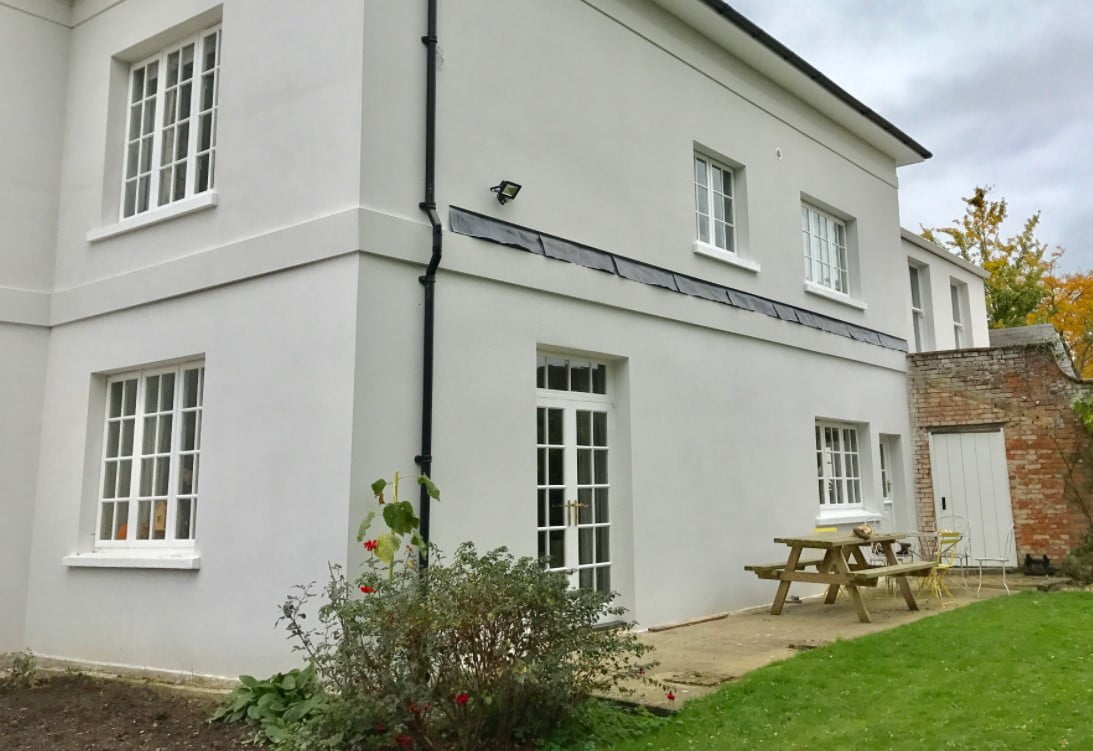Free Call Now

Welcome to the vast topic of rendering, and ashlar rendering. Let us get stuck in, as it were.
Rendering means covering the inner or outer part of a wall with a solid plaster. For this reason, it is also sometimes referred to as 'solid plastering'. Rendering is mostly applied externally to provide a weather-resistant coat to a house or building. It is a practice that's been around since the Romans. So here are a few lines on why ashlar render is so popular right now.
Contents
Rendering is the action of coating a brick or concrete wall with a mixture of cement, fine sand, lime gypsum and some water. It is a job for qualified craftsmen that can involve several types of mixes, including modern versions using acrylic or using silicone. Render is usually layered to use a coarser mixture for the base coat and a smoother blend to finish. The outer look is then refined using different tools. Depending on the desired effect, these can range from a trowel to a sponge.
Originally, rendering was achieved by mixing its main component, lime gypsum, with various binding sources like animal hair or straw. Compounds have evolved but Georgian house fronts can still be admired. Well and truly, there is a lot to be said for this technique. Read on to learn how this is.
Once rendered, a building is protected from the elements for decades. The layers of plastering strengthen the wall structure, making it a no brainer where old buildings with damaged brickwork are concerned, for example.
Not only that, but render can be done in a customised fashion. Say only part of a wall needed re-plastering, then new render applied would be on that part only. You would not have to fork out for a complete makeover to get your coating as good as new.
Let's get back to the use of lime for a minute. Because this is the key to a wall that remains supple to a certain degree. This way, risks of cracks are minimised and any condensation inside the home is allowed out, so mould doesn't set in. Keep this in mind when considering newer alternatives for lime. Acrylic products don't offer this breathability, but silicone does.
Aside from the purely technical benefits of rendering your property, it also makes sense as a visual effect, if you want to blend in an extension or keep the outline of two adjoining buildings consistent.
One sure thing is that giving your property a render finish adds value to it. Although it comes at cost, it's a wise investment to make. So time for some solid plastering shopping - wayhay! If you're not a fan of the old pebbledash finish, an ashlar render may be just the thing for you.
An ancient Greek style home? Yes please. Expensive stonework? Pass. Or... try again? Ashlar render, of course. Ok, so what is ashlar rendering exactly? If you are familiar with the term stucco, think stucco minus the sculpted effect, keeping the groovy part only.
Basically, ashlar rendering is a method of recreating that impressive stonework, without the stones. It takes special equipment to carve out perfect lines suggesting neatly-assembled stonewalls and their quoins. The result? A tidy, classy look and interiors protected from adverse weather conditions.
There are two ways of producing ashlar render. First, by running tools across to mark lines before the mixture sets. Second, applying a render mould to the wall, which requires two stages of work. Whatever the case, it's a job for the professionals.
Ashlar rendering is typically reminiscent of the Georgian era when it was used most. This period look is trending again and offers various sizes of make-believe stonework, along with a multitude of colours and textures.
Is there anything to halt ashlar rendering enthusiasts? Sometimes there is not, so regulations are in place to protect listed buildings from this modern do-over with an ancient streak. This would defeat the purpose, as a period façade is already on hand.
Similarly, you can always decide to flatten your ashlar in no time by getting the rendering resurfaced to an even wall. But once you've got your ashlar in place, we guarantee you won't want to.
The word 'ashlar' has two different meanings; one being ashlar stonework and the other being ashlar plasterwork. In ashlar stonework, designers are influenced by traditional Greek design and is often seen with square cuts of stone detail found in some townhouses of Mayfair and Knightsbridge, London. Ashlar stonework is very expensive and boats a status of wealth in middle class.
In the late 1800s, plaster was used achieve the stone look as it was too expensive. Builders would add grooves into the plaster to create the quoin and bands. The same detail would be achieved using cuts and grooves and at a cheaper cost than stone.